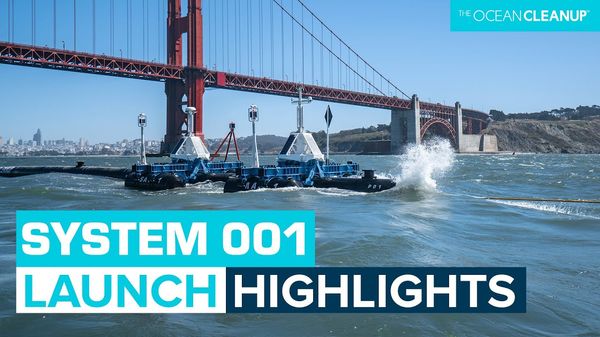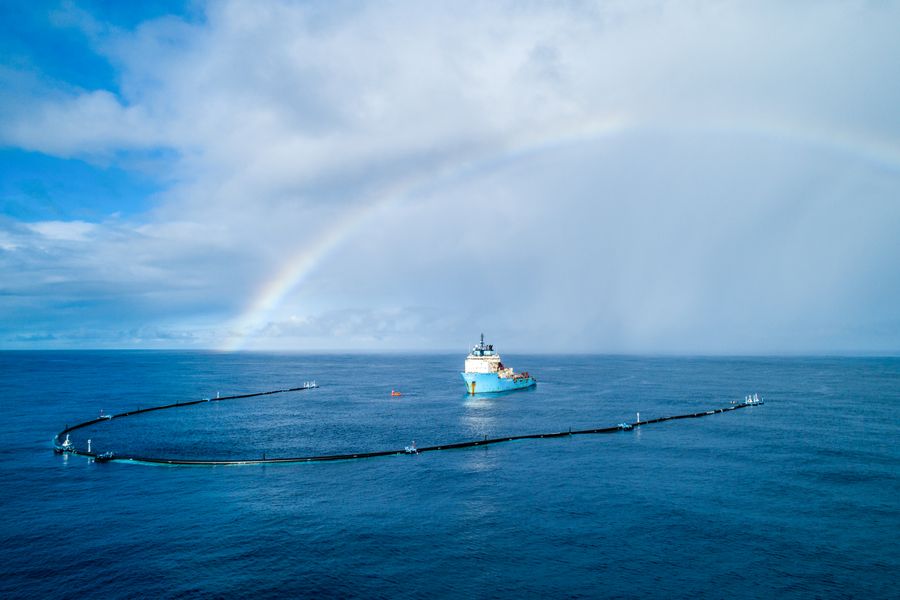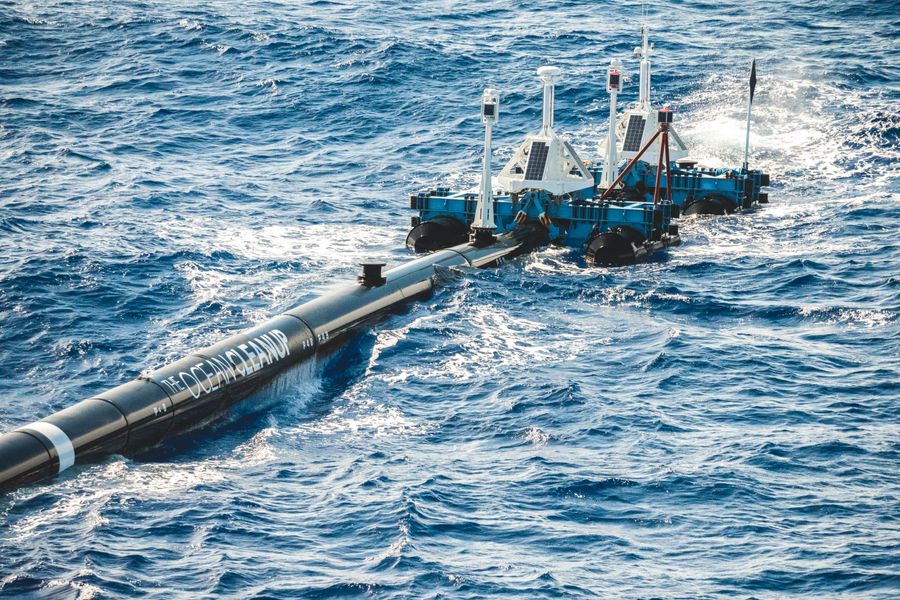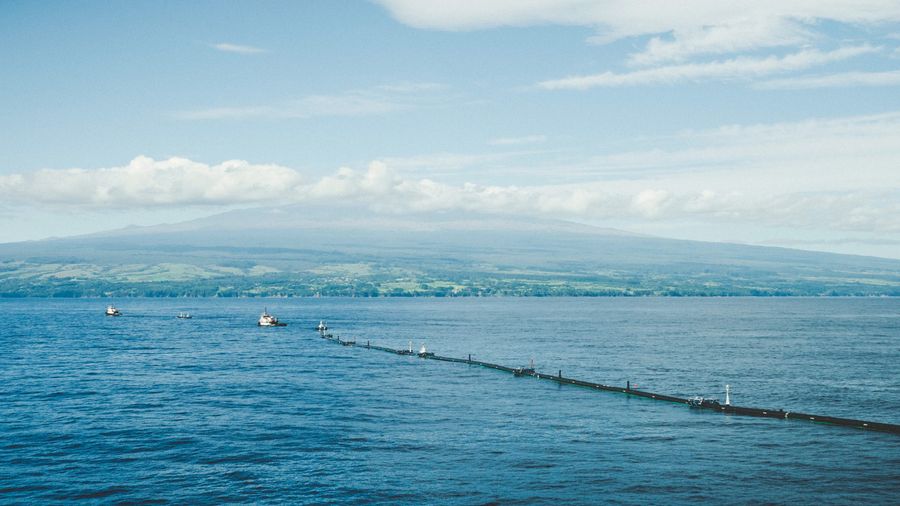
Launched in September 2018, System 001 was the world’s first cleanup system to be trialed in the Great Pacific Garbage Patch. During its four-month campaign, System 001 validated many aspects of our ocean cleanup technology. It also provided us with new learnings that we could later incorporate into the design of System 001/B.
After 273 scale model tests, six at-sea prototypes, a comprehensive mapping of the Great Pacific Garbage Patch (GPGP) with 30 vessels and an airplane, plus several technology iterations, we were ready to start assembling our first system. Following a six-month build in Alameda, California, on September 8, 2018, the launch of “Wilson” marked a significant step for The Ocean Cleanup in our mission to rid the oceans of plastic.

System 001 was deployed in the Great Pacific Garbage Patch for approximately four months. Several checklist items were confirmed during this period, such as the system’s stability, configuration, and ability to orient with the wind. Furthermore, during our environmental monitoring, no environmental impact issues were detected. However, we did observe that the system was not effectively retaining plastic. Later, while the team was testing solutions, a fatigue fracture caused an 18-meter section of the system to detach. As a result, the crew and System 001 safely returned to shore in Hilo (Hawaii) on January 17, 2019, concluding the System 001 campaign.
Of course, this was not the planned conclusion of the System 001 operations, but, as is expected with iterative design, discovering the flaws in our design is essential for success. Dubbed “unexpected learning opportunities”, these challenges gave us a greater understanding of the Great Pacific Garbage Patch environment and how our system behaves in it. Using the insights and data collected from System 001’s time offshore, we went back to the drawing board. We conducted a root cause analyses for the ineffective plastic retention and the structural failure. It was concluded that the system needed to maintain a consistent speed through the water to effectively catch and retain the plastic. Regarding the fracture, we determined that stress concentrations at the weld points in the dovetail connections caused the material fatigue. With these understandings, the engineering team developed solutions to address both issues and incorporated them into the next iteration design—System 001/B, which we trialed later in 2019.
System 001 was an important milestone. It was the first time we successfully tested our technology in its intended environment, the Great Pacific Garbage Patch. We learned many valuable lessons from which we could build upon and optimize the technology on our road towards system validation.




